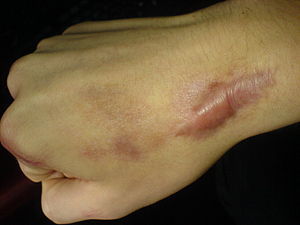Contents:
- Medical Video: Fragile X Syndrome - causes, symptoms, diagnosis, treatment, pathology
- What is fragile X syndrome?
- Characteristics and symptoms of fragile X syndrome
- Disorders of growth and development
- Behavioral disorders
- Physical abnormalities
- How do doctors diagnose this disease?
- Diagnosis during pregnancy (prenatal)
- Postnatal diagnosis
- Can fragile X syndrome be cured?
- Life expectancy
Medical Video: Fragile X Syndrome - causes, symptoms, diagnosis, treatment, pathology
Lately statistics have shown an increase in babies born with congenital abnormalities. Disorders originating in the womb increase with the increasing number of risk factors, including age when the mother is pregnant to exposure to dangerous chemicals during pregnancy. One congenital disorder that is quite high but not widely known to the public is fragile X syndrome, also known as Martin-Bell syndrome.
What is fragile X syndrome?
Syndrome means a collection of symptoms, so fragile X syndrome means a set of symptoms that arise due to fragile X. This syndrome is estimated to occur in 1 in about 5,000 men and 1 in about 6,000 women.
Fragile X syndrome is caused by a genetic disorder when the fetus develops in the womb. This disorder begins when an abnormality occurs in the form of excessive repetition of the DNA segment that encodes the "CGG" protein. As a result, mutations occur in genes Fragile X Mental Retardation 1 (FMR 1) so that the long end of the X chromosome becomes brittle.
This fragility eventually causes symptoms and physical characteristics in babies born. Various factors also play a role in causing this syndrome in children, for example parents have a similar condition or the fetus is exposed to certain chemicals.
Characteristics and symptoms of fragile X syndrome
This disorder has various symptoms and signs that can be seen, both from the toddler and when the child grows. Fragile X syndrome is indicated by growth disorders, behavioral disorders, and physical disorders.
Disorders of growth and development
Children with fragile X syndrome are usually late talking than children their age and tend to stutter. In the case of intellectuals, the average person has mental retardation with an IQ below normal and has a disorder of development of mindset.
In addition, memory problems occur so that children often find it difficult to capture new information, for example when recognizing a person's face and name or mentioning the name of an object.
Behavioral disorders
Children with fragile X syndrome show some fairly typical behavior. Children tend to avoid eye or physical contact with their interlocutors.
Symptoms can also be foundattention deficit hyperactivity disorder (ADHD), including difficulty focusing and being hyperactive. Another behavior that is quite unique is that children often make repetitive movements continuously, for example making movements as if they are clapping.
Physical abnormalities
Some of the following typical displays can be found in fragile X syndrome.
- Big and prominent ears
- Long face
- The ceiling is high and curved
- Hypotonia (low muscle tone)
- Large testes in boys (especially after puberty)
How do doctors diagnose this disease?
This disorder can be diagnosed both when the baby is still in the womb (prenatal) and after birth (postnatal).
Diagnosis during pregnancy (prenatal)
Detection of fragile X syndrome when a baby is still in the womb can be done by analyzing amniotic amniotic water in a pregnant woman so that certain genetic disorders in the baby can be known.
Postnatal diagnosis
In addition to tracing the child's growth history and physical examination that leads to this disease, a definite diagnosis can be made using molecular techniques, for example by the method polymerase chain reaction (PCR).
Can fragile X syndrome be cured?
Until now, the medical world has not found a treatment that can cure fragile X syndrome. This is difficult because this disease is caused by genetic factors so that various types of abnormalities have been formed from the womb.
Treatment available is intended to minimize the symptoms that arise such as hyperactivity and nervous system disorders. In addition, behavioral therapy and stimulation of speech, language and memory development are also carried out.
Life expectancy
People with this syndrome can live to adulthood. Patients can also carry out simple activities under special supervision if they routinely undergo rehabilitation therapy. If you still have further questions about this topic, consult your doctor directly.













